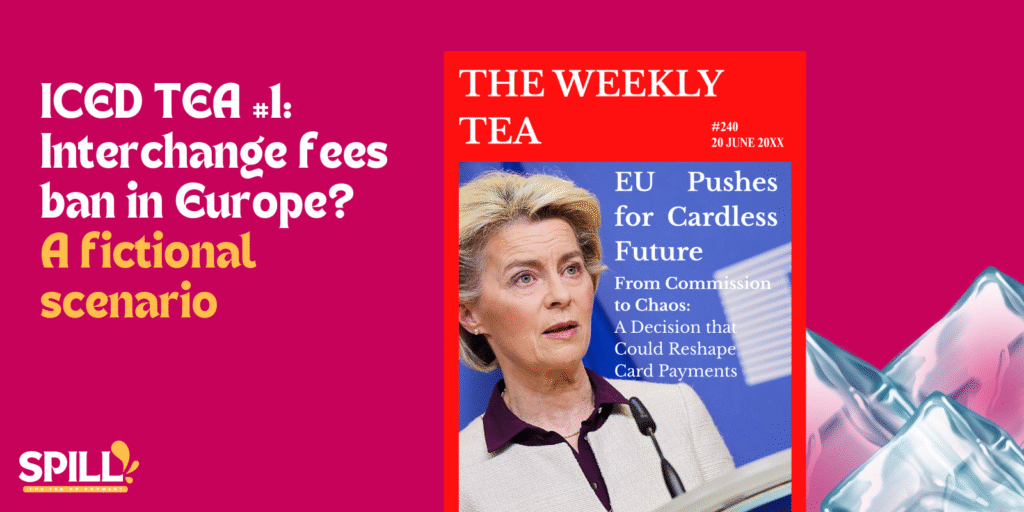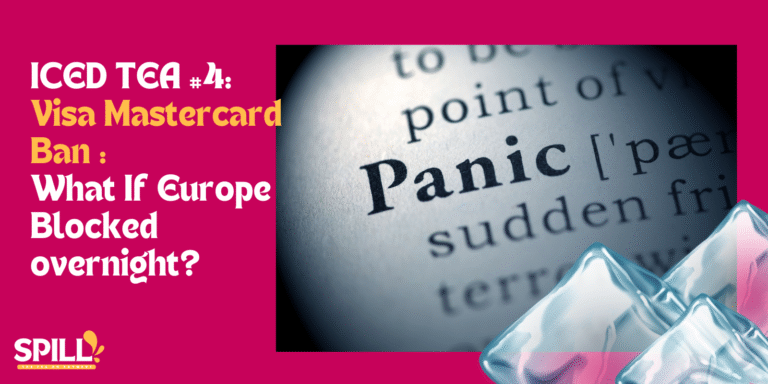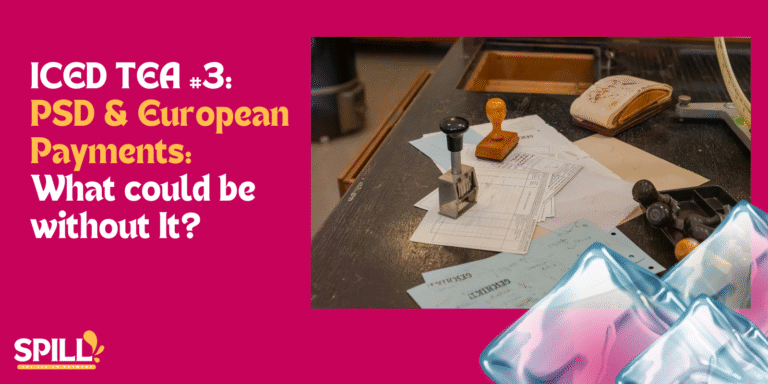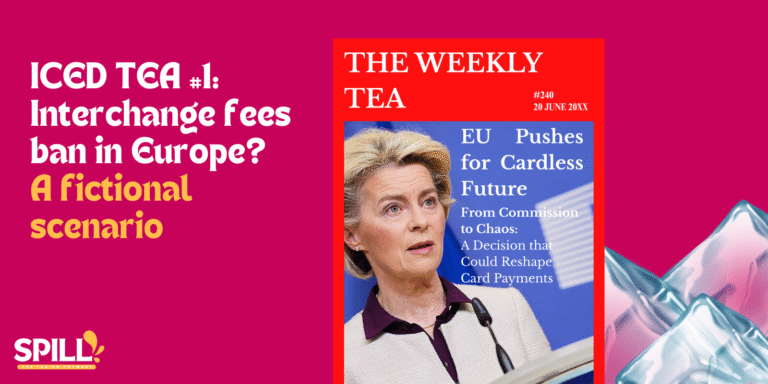What if Interchange fees faced a ban in Europe after the European Commission took a new regulation?
Iced Tea is my summer saga, where I took the craziest assumptions to rethink our approach to payments. It is highly fictional, but it is a nice slow-burning exercise.
I wanted to open this summer series with this provocative question.
Interchange model : Core of Payment Architecture
The interchange model is at the core of Payment systems since the Industry exists. Industry has got real struggle to project without this model. This business model structures the whole Industry. But more and more voices are saying this model is unfair and distorts competition between actors. Before the emergence of e-commerce and the acceleration of people’s movement, no one questioned this model, albeit a bit obscure. However, as competition intensified in payments, the noise became way more obvious.
Banning Interchange is also shaking the foundation of a whole industry. It would mean that suddenly, we should rewrite all the rules of the game. A tabula rasa approach that would indeed create a big bang, but also potentially generate new ideas from the chaos.
I imagine the following article to make the scenario sound realistic.
This is highly plausible, but remember this is for illustration purposes. All situations are fictitious
🚨Breaking News : Interchange fees face a ban in Europe!
Interchange has been regulated since 2015 under a directive, but due to a never-ending increase of some fees (especially scheme fees) and after a massive class action from Merchants and retailers, the Commission decided that Interchange fees will face a ban in Europe for all intra-European transactions.
ECB to Set a Unified Card Fee
Those transactions will have to follow a standardised and transparent fee set by the ECB. Each year, the fee will be reviewed by an independent authority and asked to correct if it impacts merchants’ activity. A unique rate will be established for all European transactions overseas or not, and this rate will have to be shared by all actors of the chain. 0,5% plus 10 cents, for the first year.
Meaning as long as a European individual or business use a card to pay that applies the interchange model, they must follow the cap in action. Whether in intra-European or outside Europe.
Incentives Out, Level Playing Field In
The Commission decided not only to ban Interchange fees in Europe but any type of incentive from schemes to issuers and acquirers as well, like signing bonuses, exceptional discount, etc. This aims at offering a fair model for smaller networks who can’t afford this type of mechanism and distort competition with international networks.
How the 4-Party Model Became a House of Cards
The interchange model is the ABC of the 4-party model. Divided in 3, it pays all the parties involved in the financial process of a transaction. Bank, the issuer of cards, receive Interchange fees. Scheme fees are for the network, a bit like a toll gate fee, and of course, the acquiring fees are for Acquirers who settle funds to the merchant. All those fees are pretty opaque; there is no standard or transparency on them. So far, Europe has regulated only Interchange by capping consumer cardholders’ transactions. Merchants pay on each transaction, netted before settlement. Those fees exist mostly when merchants want to accept card payments. International Networks are the ones that use the 4-party model the most.
The Business of Issuing Just Got Less Rewarding
Schemes use this model to maximise the acceptance network. By providing a big incentive to issuers, they incentivise the issuers to issue more cards as they will get rewards, as interchange can be pretty elaborate and complex according to multiple parameters: type of cards (debit, credit, charge, prepaid), type of merchants, etc. In return, as the cardholders’ base increases, it attracts acquirers who want to accept the card network to distribute processing services, and settle it directly to their customers’ business accounts.
Scheme fees also help the scheme in financing their programs, their different initiative and products like 3DS. Each time a merchant using the 3DS pays a fee to the scheme.
Finally, Acquirer fees are relevant for acquirers when taking a risk to accept a transaction.
Courts Rule Against the Gatekeepers
The court, when deliberating, estimated that the use of interchange as a way to reward issuers was deemed to be unfair for the merchants. It emphasised that many alternatives currently exist to accept payments, but those don’t benefit from this elaborate system. Banks are therefore not incentivised to offer alternatives, as cards are way more interesting for them. Most of the issuing banks are acquirers as well, creating a balance in their results. The arguments from the scheme explaining it helps make their network attractive did not work; the court decided to send the case to the European Commission to establish a transparent and fair pricing applicable to all transactions within the Union.
The court also stated that merchants supporting efforts do not seem to be fair for them. They pay for all the fees related to transactions, especially services that protect transactions from fraud, while users are not particularly penalised when disputes happen on their account. Schemes explained that the dispute system is here to ensure it respects consumers’ right to dispute a transaction. The court answered by stating that European laws on consumers already ensure a safe space and stringent rules for merchants when it comes to disputes.
Mixed Reactions Rock Europe’s Payment Sector
Fintech associations see this decision of Interchange fees ban in Europe as “a big threat to their existence”, since they stated that 90% of their members rely on the interchange system to exist. Associations explain that capping will make the job of payment less attractive and will prevent innovation from thriving.
Bank associations welcome the news coldly. They estimate that the cap of interchange fees already made the model attractive. They will focus on developing alternatives to card payment that are safer, like instant payments.
Instant payments networks express their satisfaction with this measure to open the market more to smaller actors, to . Interchange fees ban will “allow a real and healthy competition in Europe “
Merchants and Retailers’ Associations applauded a “historical decision that will benefit final consumers”. By providing cheaper alternatives, it will force the whole industry to move from this model that was penalising retailers. It will diminish the existence of cash, as it attracts consumers to a system that is free of charge. Merchants and consumers, by European regulation, should have free access to Instant Payment.
Stock Markets React, Payment Giants Stagger
European champions (Adyen, Worldline, Nexi), extremely dependent on schemes, lost 30% of their value at the stock market, forcing their CEOs to publicly reassure the market on their strategy to get out of the dependency on the interchange model. However, Adyen also stated they were considering leaving the European stock exchange for London. They stated they considered Interchange as “vital for their business” and “boosting their American presence”. North America now represents a significant chunk of their business. »
Remember, none of this happened. Yet.
But when a system relies so heavily on incentives no one understands, built on pricing no one can explain, how long until someone, somewhere, decides to pull the plug?
Interchange is just one piece of a domino. What else falls when it topples?
🧃 This was Iced Tea, a fictional chill for a hot summer.
One idea. Many consequences. No easy answers.
See you next week for another glass.
This article is a fiction; all situations are invented and here to expose the systemic consequences of bold and unpredictable decisions from outside the industry. Any reproduction without this warning is without the responsibility of its author.










